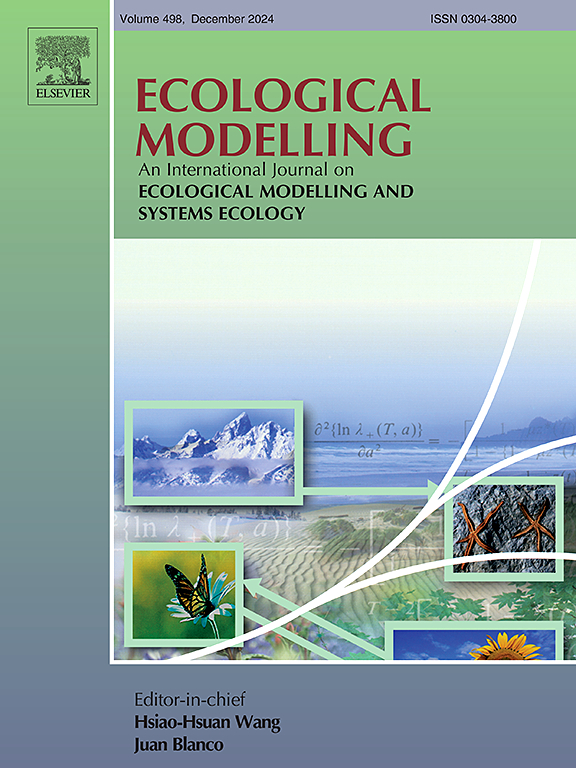Modelling system dynamics as a socio-ecological perspective to support human-beaver interactions
IF 2.6
3区 环境科学与生态学
Q2 ECOLOGY
引用次数: 0
Abstract
Beavers are semi-aquatic mammals that significantly impact on freshwater ecosystems, creating benefits and challenges, particularly in areas with close human interaction. Managing human-beaver interactions is a multifaceted issue due to the many variables involved, but the complexity of these interactions can be analysed effectively using system dynamics models. These models are used in many contexts, including wildlife management, to simulate a variety of management policies and assess their effects. The present study addressed gaps in the literature by developing a system dynamics model that examined both the benefits and conflicts that arise from human-beaver interactions. The model, implemented using Vensim PLE software, synthesised qualitative and quantitative data to simulate four simulation scenarios: ecological, social, economic, and policy making. The study examined the dynamics of beaver populations, ecosystem service provision, social perceptions, and management strategies in a case study of the Ivrea lakes area in the Piedmont region (Italy). Model predictions highlights that beaver populations stabilized logistically, influencing ecosystem services and residual capital, while social acceptance stongly reduced management costs and social pressure. Optimal budget allocation and combined strategies emerged as key to sustainable management and conflict mitigation. Overall, predictions suggest that an integrated approach that prioritises prevention and actively engages local communities can improve both ecological outcomes and social acceptance of beavers. The model is a useful decision and discussion tool for assessing management strategies and facilitating stakeholder involvement. Future studies should expand on these results by exploring additional beaver-related conflicts and benefits in diverse contexts.
求助全文
约1分钟内获得全文
求助全文
来源期刊

Ecological Modelling
环境科学-生态学
CiteScore
5.60
自引率
6.50%
发文量
259
审稿时长
69 days
期刊介绍:
The journal is concerned with the use of mathematical models and systems analysis for the description of ecological processes and for the sustainable management of resources. Human activity and well-being are dependent on and integrated with the functioning of ecosystems and the services they provide. We aim to understand these basic ecosystem functions using mathematical and conceptual modelling, systems analysis, thermodynamics, computer simulations, and ecological theory. This leads to a preference for process-based models embedded in theory with explicit causative agents as opposed to strictly statistical or correlative descriptions. These modelling methods can be applied to a wide spectrum of issues ranging from basic ecology to human ecology to socio-ecological systems. The journal welcomes research articles, short communications, review articles, letters to the editor, book reviews, and other communications. The journal also supports the activities of the [International Society of Ecological Modelling (ISEM)](http://www.isemna.org/).
 求助内容:
求助内容: 应助结果提醒方式:
应助结果提醒方式:


